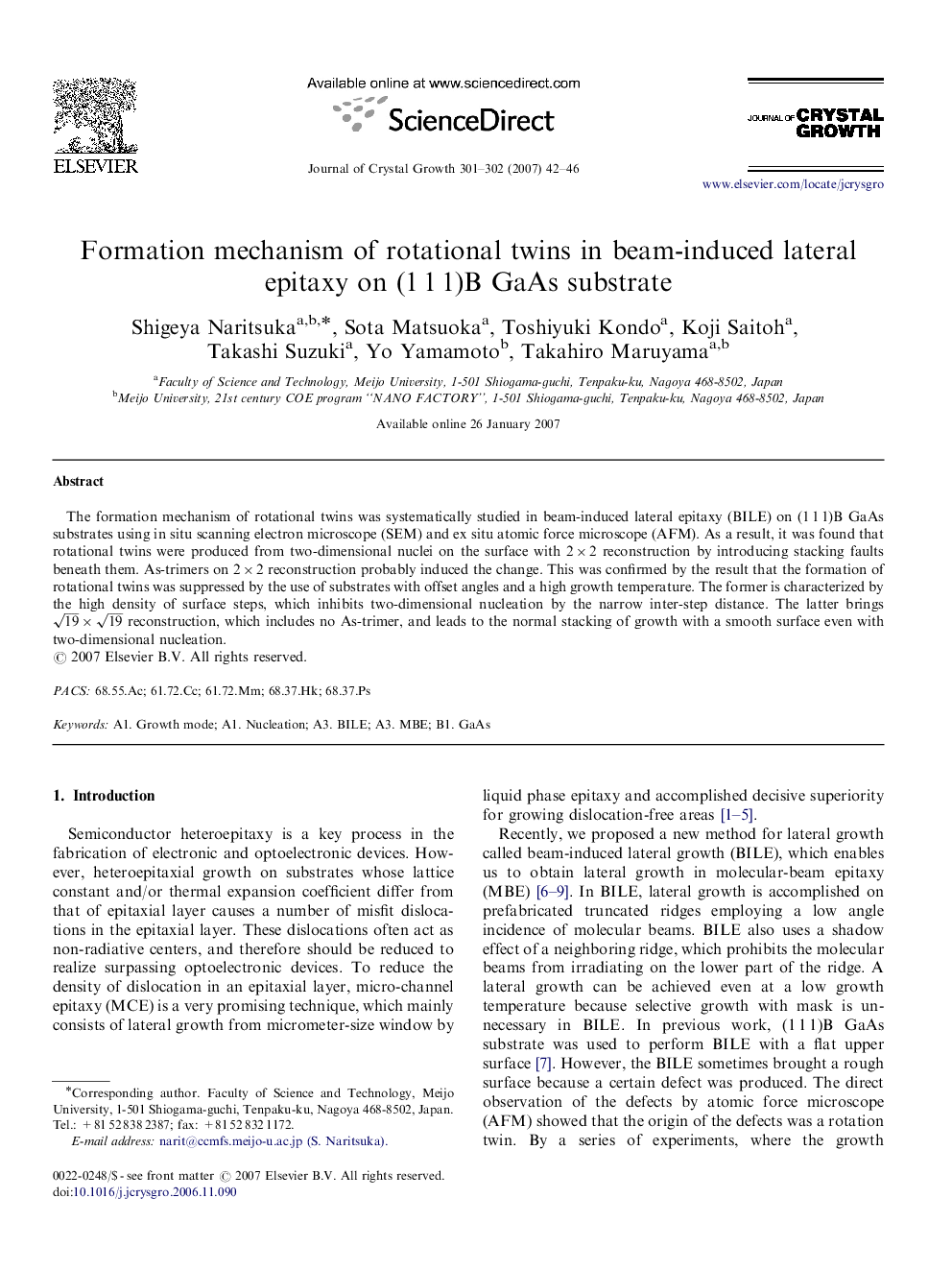| Article ID | Journal | Published Year | Pages | File Type |
|---|---|---|---|---|
| 1795281 | Journal of Crystal Growth | 2007 | 5 Pages |
The formation mechanism of rotational twins was systematically studied in beam-induced lateral epitaxy (BILE) on (1 1 1)B GaAs substrates using in situ scanning electron microscope (SEM) and ex situ atomic force microscope (AFM). As a result, it was found that rotational twins were produced from two-dimensional nuclei on the surface with 2×2 reconstruction by introducing stacking faults beneath them. As-trimers on 2×2 reconstruction probably induced the change. This was confirmed by the result that the formation of rotational twins was suppressed by the use of substrates with offset angles and a high growth temperature. The former is characterized by the high density of surface steps, which inhibits two-dimensional nucleation by the narrow inter-step distance. The latter brings 19×19 reconstruction, which includes no As-trimer, and leads to the normal stacking of growth with a smooth surface even with two-dimensional nucleation.
